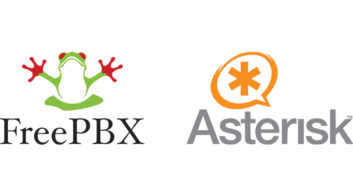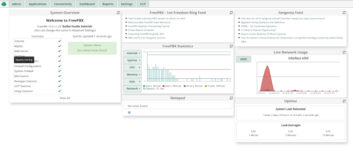 The author is assistant chief engineer of Radio One Dallas.
The author is assistant chief engineer of Radio One Dallas.
For years, Radio One Dallas had a Nortel phone system that seemingly required a service call for anything beyond switching out a handset cord.
In order to change an IVR (interactive voice response), a service technician had to come to our location, plug a laptop into a secret port, enter a super-secret password and fiddle with the system for half an hour or more just to change the main phone greeting. Then would come the bill for at least $150.
In 2013, Chief Engineer Don Stevenson and I decided we could do better.
From mutual friend Joe Talbot, who was with Telos Systems at the time, we had learned about an open source PBX system called Asterisk that ran on a standard desktop computer running Linux. Not having much Linux experience yet we were a little wary but decided to dive in and figure it out.
Up and Running
Two years later and after a steep learning curve, we were up and running with Asterisk and a whole new crop of VoIP phones.
The Nortel was gone, and so was its high cost of maintenance and upgrades. Phones for a VoIP-based system are a fraction of the cost of phones for the system we replaced. And we were generating our own ISDN and POTS lines.
Asterisk configuration was done via the Linux command line, but we had learned enough to be able to maintain the system ourselves with only an occasional call for help from our friendly neighborhood Linux geek.

We still use Asterisk to this day, and it has been the most reliable phone system we could ask for. It’s online in many other Radio One markets as well.
We no longer need to worry about command line configuration, where a single mistyped character can send you down a rabbit hole you don’t want to drop into. Instead, we’re using FreePBX (www.freepbx.org), an open source graphical user interface originally built on top of Asterisk by the open source community.
Over the years, FreePBX has transitioned from a clunky piece of software originally called “Asterisk Management Portal” to a polished, highly configurable interface that makes building and using an Asterisk PBX easy for just about anyone.
It was maintained by Schmooze until 2015 when the project was purchased by Sangoma, a business phone system company based in Canada. They are now the primary developer of FreePBX. The company purchased Asterisk developer and hardware manufacturer Digium in 2018, making Sangoma the primary developer of Asterisk as well.
Setup
Hardware requirements are pretty simple. A 64-bit desktop computer or server that has been retired but still runs should suffice. If you use a PRI (Primary Rate Interface) you will want to get a single or multiport PRI card for the computer. If you are using SIP you won’t need any additional hardware.
To install FreePBX, download the latest stable build from freepbx.org. Sangoma has packaged their own build of Linux, based on Centos, along with Asterisk and the FreePBX system and it’s all installed through one process. Burn the ISO to a CD or USB drive and boot your system off that image. The process is GUI-based and straightforward. In most cases you can accept the default or recommended selections.

We recommend building two systems. These can be set up in what FreePBX calls a “warm spare” configuration. The main system automatically sends a complete config backup to the warm spare on a regular basis, including voicemail messages and faxes, and in the event of a failure of the main system, you only need to change the IP address of the warm spare and you’re back up and running having lost virtually nothing.
In Dallas, we have three systems. One for our office lines, one for all of the radio station and Reach Media studio lines, and a spare we can use to backup either main system.
With fewer people in the office for most of us in the radio business, and with companies like Avaya sunsetting support for their legacy phone systems, now might be a good time to get rid of the mammoth old-school phone system and bring in a VoIP-based system like Asterisk/FreePBX that is easy and inexpensive, but has all the features of traditional PBX systems and many more.
You can build a system in a few hours. There is plenty of free online support, as is typical with open source software. You’ll find thousands of searchable questions and answers on the FreePBX community forums and other sites. Paid support is available if you need it.
Happy PBXing!
Learn More
The FreePBX Blog has info about product updates and access to support, engineers and developers. It’s at www.freepbx.org/blog.







